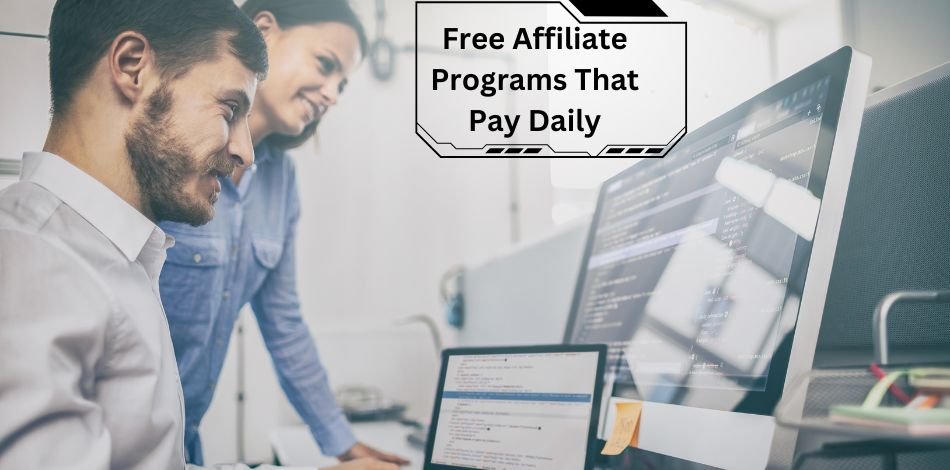Last Updated on October 30, 2025
Affiliate marketing, in its simplest form, is a performance-based online business model where individuals earn a commission by promoting products or services created by others. It has gained significant traction over the last decade due to its low barrier to entry and high scalability. But one of the most common questions beginners ask is: How Much Does It Cost to Start Affiliate Marketing?
Contrary to what some gurus might claim, affiliate marketing is not entirely free — but it’s also not outrageously expensive to get started. Your startup budget can vary based on your strategy, goals, and commitment. In this article, we’ll break down all the potential expenses you might encounter, from learning the ropes to launching your first campaign.
1. Education and Training: $0 to $500
Before you earn your first commission, you’ll need to understand how affiliate marketing works. Luckily, there’s a wide spectrum of resources — both free and paid — available for aspiring affiliate marketers. This is where you lay the foundation of your affiliate journey.
Free Learning Resources
If you’re on a tight budget, start with freely accessible content. Several reputable websites and platforms offer valuable information without costing a dime:
YouTube Channels: Channels like Income School, Miles Beckler, and Authority Hacker provide real-world strategies and tutorials for beginners.
Affiliate Blogs: Blogs such as NicheHacks, Smart Passive Income by Pat Flynn, and Neil Patel’s website are treasure troves of insights.
Free Courses: Sites like HubSpot Academy and Coursera offer introductory affiliate marketing modules for free.
Paid Courses – Worth the Investment?
While free content is useful, it can be scattered. Investing in a structured course may speed up your learning curve and save time. Many affiliate beginners choose premium courses to avoid the trial-and-error phase.
Udemy offers budget-friendly affiliate marketing courses, ranging from $20 to $100 during promotions.
ClickBank University provides a platform-focused training course that costs around $47/month or a flat rate.
Authority Hacker and Project 24 by Income School are more advanced and may cost between $300 to $500 but come with actionable blueprints and community access.
💡 Pro Tip: If you’re planning to turn affiliate marketing into a long-term business, a $100-$500 investment in education could be the best decision you make.
Why Education Matters in Affiliate Marketing
Affiliate marketing has evolved. It’s no longer about spamming links. Today’s successful affiliates understand buyer psychology, SEO, email marketing, sales funnels, and analytics. Investing in education sets you apart from the masses.
2. Website Setup: $50 to $200 per Year
Your website serves as your digital storefront. It’s where you’ll publish content, build trust with your audience, and ultimately make sales through affiliate links. While some marketers opt to use social media or YouTube alone, owning your own platform gives you full control and long-term authority.
A. Domain Name – $10 to $15/year
A domain name is your web address (e.g., www.yoursite.com). Choosing a domain that reflects your niche or brand is important for credibility. Domain registrars like:
Namecheap
GoDaddy
Google Domains
…offer domain names typically between $10 to $15 per year. Sometimes, hosting companies bundle free domain registration with their plans.
💡 Tip: Aim for a .com extension if possible. It’s the most recognized and trusted.
B. Web Hosting – $3 to $10/month
Hosting is where your website lives online. If you’re just starting, shared hosting is affordable and sufficient.
Popular beginner-friendly hosting providers include:
Bluehost – Offers plans starting at $2.95/month (often with a free domain for the first year).
Hostinger – Starting from $1.99/month, very affordable with decent performance.
SiteGround – Slightly more premium, with faster speeds and better support (~$3.99 to $6.99/month).
Expect to pay around $50 to $120 annually for basic hosting.
C. Content Management System (CMS) – Free
Most affiliates use WordPress to build their sites. It’s:
Free to use
Flexible with themes and plugins
Highly SEO-friendly
There’s no direct cost to use WordPress.org, though there are associated costs with themes and plugins, which we’ll discuss next.
D. Website Themes – $0 to $100
You can start with free WordPress themes like Astra, Kadence, or GeneratePress — all optimized for speed and SEO.
However, for a more professional look and advanced features, premium themes are worth considering:
GeneratePress Premium – ~$59/year
Astra Pro – ~$59/year
Divi Theme by Elegant Themes – ~$89/year
Premium themes often come with built-in customization options and support.
Updated Tools for 2025: Fast Track Your Setup
Elementor Website Builder (free & pro): Easy drag-and-drop interface, perfect for beginners.
RankMath SEO Plugin (free & pro): Helps you optimize content for search engines.
WP Rocket: Caching plugin to speed up your site, ~$49/year.
Estimated Total Website Setup Cost
| Item | Cost (Annual) |
|---|---|
| Domain Name | $10–$15 |
| Hosting | $50–$120 |
| Premium Theme (Optional) | $30–$100 |
| SEO/Caching Plugins (Optional) | $30–$80 |
| Total | $50 – $200+ |
Do You Really Need a Website for Affiliate Marketing?
Technically, no — you can use YouTube, Medium, or even TikTok to drive traffic and earn affiliate commissions. However, having your own website gives you control, the ability to build an email list, and long-term growth potential. It’s the best asset you can invest in as an affiliate marketer.
3. Content Creation: $0 to $1,000+
When asking “How Much Does It Cost to Start Affiliate Marketing?”, content costs vary wildly based on your approach. Some affiliate marketers write every article, record every video, and design all their visuals. Others prefer to outsource. Either path is valid — it depends on your budget, skillset, and time availability.
A. DIY Content – $0 (But Time-Intensive)
If you’re a good writer or have decent video production skills, you can create content yourself. This approach minimizes financial cost but requires a heavy time investment.
Examples of DIY content:
Blog posts & articles reviewing products
How-to guides
YouTube videos explaining product features
Infographics made with free tools like Canva
Pros:
100% control over your brand and voice
No monetary investment required
Ideal for those starting on a tight budget
Cons:
Takes time to master content creation
Slower to scale without help
B. Outsourcing Written Content – $20 to $100+ per Article
If writing isn’t your strength or you want to scale faster, hiring freelance writers can be a great option.
Where to find writers:
Fiverr: Budget-friendly, but quality varies
Upwork: Mid- to high-tier freelancers with verifiable experience
Content Agencies: More expensive but often deliver polished, SEO-optimized content
Typical pricing:
| Word Count | Budget Writer | Mid-Range Writer | Expert Writer |
|---|---|---|---|
| 1,000 words | $15–$25 | $30–$70 | $80–$150+ |
For affiliate review articles, investing in writers who understand SEO and conversions is worth the cost.
C. Video Content Creation – $50 to $300+ per Video
Video content continues to dominate in 2025, especially on YouTube and TikTok. If you’re creating video content:
DIY Tools:
Smartphone with good camera
Free editing tools like CapCut or DaVinci Resolve
Free background music from YouTube Audio Library
Outsourced Video Production:
Freelancers may charge $50 to $300+ depending on scriptwriting, editing, animation, and voiceovers.
Platforms like Fiverr, PeoplePerHour, and Video Husky offer video services.
D. Graphics & Design – $0 to $200+
Visually appealing graphics enhance user experience and improve engagement:
Free Tools:
Canva Free
Pixlr
Remove.bg for background removal
Paid Tools or Services:
Canva Pro – $10/month for premium templates and assets
Freelance Designers – $10 to $50 per graphic or banner
Stock Photo Sites – Sites like Shutterstock and DepositPhotos offer bundles from $29/month+
E. AI Tools for Content Creation (2025 Update)
With the rise of AI, tools like ChatGPT, Jasper, Writesonic, and Copy.ai help speed up content generation. These tools cost between $20 to $99/month, depending on usage limits and features.
⚠️ Note: While AI can speed up your process, you still need to edit for accuracy, originality, and personality to avoid penalties from search engines.
Summary of Content Creation Costs
| Content Type | Cost Range |
|---|---|
| DIY Articles | Free (Time Investment) |
| Outsourced Articles | $20–$100+ per piece |
| DIY Video | Free to ~$50 |
| Outsourced Video | $50–$300+ per video |
| Graphics & Design | Free to $200+ |
| AI Writing Tools | $20–$99/month |
How Much Content Do You Need to Start?
Start small. A website with 5 to 10 well-written articles or product reviews is a solid foundation. Add new content weekly or bi-weekly. Over time, as traffic grows, you can scale up with more outsourced content.
4. Tools and Software: $0 to $100+/month
Depending on your approach, you can start with free tools or invest in paid software for faster, more effective growth. Here’s a breakdown of the most essential categories:
A. SEO Tools – $0 to $399/month
SEO (Search Engine Optimization) is crucial for driving organic traffic to your affiliate content. Here are popular options:
Free Options:
Google Search Console – Track keyword rankings, indexing, and traffic
Ubersuggest (Free Tier) – Offers basic keyword and competitor data
Keywords Everywhere – Browser plugin showing keyword data on Google
Paid Tools:
Ahrefs – Starts at $99/month. Deep site audits, competitor research, and backlink tracking.
SEMrush – Similar to Ahrefs, with content planning tools. Also starts at $119.95/month.
LowFruits – Budget-friendly keyword research tool (~$29/month)
💡 Tip: Start with free tools and upgrade as your traffic grows and SEO becomes a priority.
B. Email Marketing Tools – $0 to $70+/month
Building an email list helps you maintain direct communication with your audience and drive affiliate sales through newsletters and offers.
Free Plans:
Mailchimp – Free for up to 500 contacts, includes basic automations
MailerLite – Free for up to 1,000 subscribers with limited automation
ConvertKit – Free for up to 1,000 subscribers with basic features
Paid Plans (2025 Pricing):
ConvertKit: From $15/month for advanced automations
ActiveCampaign: Starts at $29/month for CRM & marketing automation
GetResponse: From $19/month with landing page features included
C. Graphic Design Tools – $0 to $10/month
Good visuals help your brand stand out — especially on blog posts, social media, and YouTube thumbnails.
Canva (Free) – Great for beginners
Canva Pro – ~$10/month; includes premium templates, stock images, brand kits
Crello (now VistaCreate) – Another user-friendly design tool with free and pro versions
D. Funnel & Landing Page Builders – $0 to $99+/month
For those looking to build email capture pages or product-specific landing pages, consider:
Systeme.io – Free plan available with funnels, email marketing, and membership site features
Leadpages – ~$49/month; easy drag-and-drop builder for high-converting pages
ClickFunnels – Starts at $97/month; best for advanced funnel structures but pricey for beginners
E. Analytics & Tracking – $0 to $20/month
Understanding how visitors interact with your content is essential.
Google Analytics (GA4) – Free and powerful
ClickMagick – ~$37/month for link tracking and conversion data
Hotjar or Microsoft Clarity – Free heatmaps and behavior tracking tools
F. AI Content Tools – $0 to $99/month
AI tools are becoming part of every marketer’s toolkit.
ChatGPT (Pro) – $20/month
Jasper AI – Starts at $39/month
Writesonic, Copy.ai, KoalaWriter – Between $10–$99/month depending on plan
These tools help write blog posts, email copy, product descriptions, and more.
Recommended Tool Stack for Beginners (Lean Setup)
| Category | Tool | Monthly Cost |
|---|---|---|
| SEO | Ubersuggest Free | $0 |
| Email Marketing | MailerLite Free | $0 |
| Design | Canva Free | $0 |
| Analytics | Google Analytics | $0 |
| Funnel Builder | Systeme.io Free | $0 |
| Optional AI Writer | ChatGPT Pro | $20 |
| Total Monthly | $0–$20 |
| Category | Tool | Monthly Cost |
|---|---|---|
| SEO | Ahrefs | $99 |
| Email Marketing | ConvertKit | $29 |
| Design | Canva Pro | $10 |
| Analytics | ClickMagick | $37 |
| Funnel Builder | Leadpages | $49 |
| AI Writer | Jasper | $39 |
| Total Monthly | $263 |
Here’s the good news: the majority of affiliate programs are completely free to join. Whether you’re promoting physical products, digital software, or online courses, joining these programs doesn’t usually require an upfront payment.
Popular Free Affiliate Networks:
Amazon Associates – One of the most well-known, especially for physical products.
ShareASale – Offers thousands of merchants across different niches.
ClickBank – Focused on digital products, ideal for high-commission strategies.
CJ Affiliate – High-quality brands and recurring commission options.
Impact & PartnerStack – For SaaS tools and premium services.
Some programs may require:
Approval process
An existing website or content base
Clear explanation of your promotional method
Programs with Fees (Rare but Notable):
Certain high-ticket programs or exclusive affiliate systems may charge a one-time or monthly fee (typically $50–$200) to access advanced training, high-commission products, or private support communities.
However, these are exceptions, not the rule.
6. Advertising & Promotion – $0 to $1,000+
Once your content is live, you need traffic — people visiting your affiliate site, watching your videos, or reading your social media posts. There are two main paths: organic (free) and paid.
A. Organic Traffic (Free but Time-Consuming)
If you’re on a tight budget, organic methods are your best friend. These methods cost nothing but your time and consistency.
Organic Traffic Sources:
SEO (Search Engine Optimization): Optimize articles for search engines to gain rankings over time.
Social Media: Platforms like Facebook, Instagram, Pinterest, and TikTok help share content and attract followers.
YouTube: A single review video can generate traffic for years.
Email Marketing: Build a subscriber list and promote affiliate products through newsletters.
🟢 Cost: $0, but expect to invest time daily or weekly to grow these channels.
B. Paid Advertising – $5/day to $1,000+/month
For faster growth, paid promotion can help you reach targeted audiences more quickly. You can start small, test performance, and scale over time.
Pay-Per-Click (PPC) Advertising:
Google Ads – Promote landing pages or content directly on Google.
Facebook & Instagram Ads – Great for targeting interests and behaviors.
YouTube Ads – Pre-roll video ads, ideal for video-heavy content.
Pinterest Ads – Effective for DIY, home, lifestyle, and eCommerce niches.
Typical costs:
$5/day (~$150/month) for beginner-level testing
$500–$1,000/month+ for serious growth and scaling
💡 Pro Tip: Start with retargeting or email list building before spending heavily on direct product ads. Warm leads convert better than cold traffic.
C. SEO & Content Promotion Services – $100 to $1,000/month
If you don’t want to handle SEO or backlink building yourself, consider hiring help.
Freelance SEO experts: $100–$500/month
Backlink outreach services: $50–$300/link
Guest post placements: $100–$300 per site
Content promotion agencies: $300–$1,000+/month
Make sure you choose providers with a reputation for white-hat practices. Avoid spammy link schemes.
D. Social Media Tools – $10 to $50/month
Scheduling and analytics tools like Buffer, Hootsuite, or Metricool can help streamline your promotion on multiple platforms.
Summary of Promotion & Advertising Costs
| Method | Cost Range |
|---|---|
| Organic SEO & Social Media | $0 |
| Facebook/Instagram Ads | $5–$50/day |
| Google Ads | $10–$100+/day |
| SEO Outsourcing | $100–$1,000+/month |
| Social Media Tools | $10–$50/month |
| Affiliate Programs | Mostly Free |
If your question is, “How Much Does It Cost to Start Affiliate Marketing?”, your choice of promotion method makes a big impact. Start with organic traffic and low-budget ads. Use that momentum to scale into paid promotions once you understand your audience and conversion data.
7. Miscellaneous Costs – $50 to $500
While not essential from day one, these additional costs can make your affiliate marketing journey smoother and more professional over time.
📚 Professional Development
Ebooks, webinars, workshops: Stay up-to-date with marketing trends.
Online communities: Memberships in forums or groups like Affiliate Lab, SEO Signals Lab, or niche-specific Slack groups may charge $10–$50/month.
🧩 Plugins & Extensions
While many WordPress plugins are free, premium versions offer better features:
Rank Math Pro (SEO): $59/year
Thrive Architect (Landing pages): $97/year
Pretty Links Pro (Affiliate link cloaking): $99/year
🤝 Networking & Events
If you’re serious about the industry, attending conferences like Affiliate Summit or Traffic & Conversion Summit may cost:
$100–$500 for virtual passes
$1,000+ for in-person events (travel excluded)
💡 Tip: These costs aren’t mandatory, but they help you build relationships, learn advanced tactics, and expand your affiliate network.
💡 Example Scenarios: Total Cost Breakdown
Let’s answer the main question once and for all: How Much Does It Cost to Start Affiliate Marketing? Here are three budget scenarios based on your ambition and resources.
✅ Beginner on a Budget: $50 to $150
| Item | Approximate Cost |
|---|---|
| Domain Name | $10–$15/year |
| Basic Hosting | $40–$70/year |
| Free Theme | $0 |
| DIY Content | $0 |
| Free SEO & Email Tools | $0 |
| Free Promotion | $0 |
| Total | $50–$150 |
This setup is ideal for those who want to test the waters and grow slowly using free methods like SEO, blogging, and organic traffic.
🔄 Mid-Level Starter: $300 to $1,000
| Item | Approximate Cost |
|---|---|
| Domain + Hosting | $70–$100/year |
| Premium Theme/Plugins | $100–$200 |
| Outsourced Articles | $100–$300 |
| Email Tool (Starter) | $15–$30/month |
| Basic Ads Budget | $100–$300/month |
| SEO/AI Tools | $30–$100/month |
| **Total (Est. 3 Months) | $300–$1,000 |
This setup fits those who want to build faster, outsource content, and start experimenting with ads and email marketing.
🚀 Pro-Level Launch: $1,000 to $3,000+
| Item | Approximate Cost |
|---|---|
| Website & Tools | $300–$500 |
| Premium Courses | $300–$500 |
| Outsourced Content | $500–$1,000+ |
| Ad Budget | $500–$1,500+ |
| SEO Services | $500+/month |
| Misc. Tools & Events | $200–$500 |
| Total | $1,000–$3,000+ |
This budget is for serious entrepreneurs who want to scale quickly with professional help and advertising.
🎯 Final Thoughts: Is Affiliate Marketing Worth the Investment?
Yes — but with a caveat.
Affiliate marketing isn’t a get-rich-quick scheme. It’s a business. You might not see returns in your first month or even the first few, but the compounding results of good content, smart promotion, and consistent learning can lead to long-term passive income.
Here’s how to approach it:
Start lean, scale smart.
Invest in learning, but don’t overpay for shiny programs.
Focus on traffic generation — without it, even the best content won’t earn.
Track results, reinvest profits, and build systems.
🔁 Summary: How Much Does It Cost to Start Affiliate Marketing?
| Category | Budget Range |
|---|---|
| Education & Training | $0 – $500 |
| Website Setup | $50 – $200/year |
| Content Creation | $0 – $1,000+ |
| Tools & Software | $0 – $100/month |
| Affiliate Programs | Mostly Free |
| Advertising & Promotion | $0 – $1,000+/month |
| Miscellaneous | $50 – $500 |
| Estimated Total | $50 to $3,000+ |
By now, the answer to “How Much Does It Cost to Start Affiliate Marketing?” should be clear: it’s flexible.
You can start small and scale gradually — or go big from day one with a fully equipped strategy. Either way, affiliate marketing continues to be one of the most accessible and scalable online business models in 2025 and beyond.

